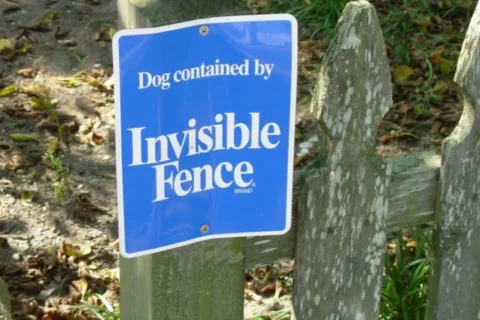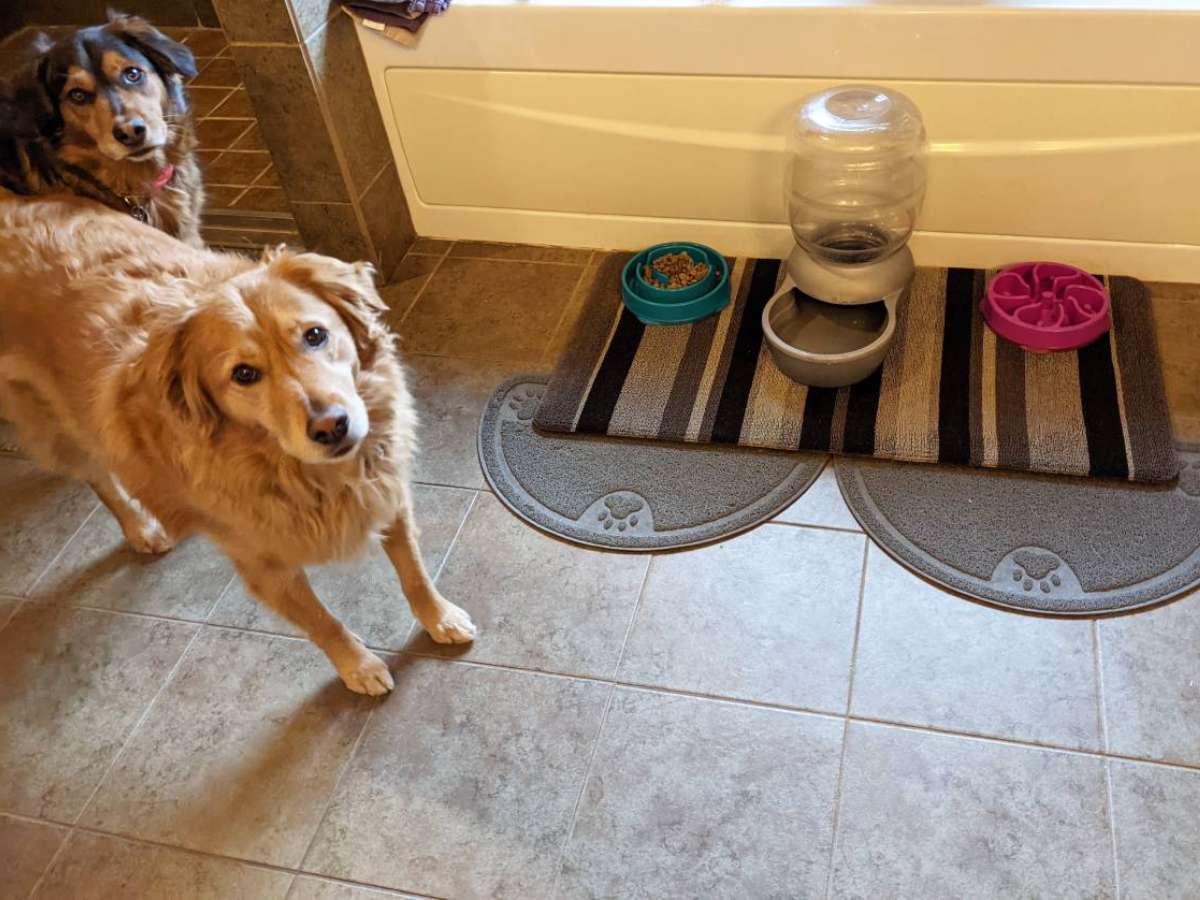For people with yards that are difficult to fence — such as a yard that is bordered by a stream, or a yard in a community where fences are not allowed — an invisible fence is an option that many dog owners consider.
Invisible fencing (also called a pet fence, a wireless invisible fence, electric invisible fence, or a fenceless boundary) is essentially a wire that is installed around the perimeter of the yard or play area of the pet.
This wire has a radio signal and the dog wears a receiver collar. If the dog gets too close to the wire boundary, the collar emits a noise. If the dog gets closer, or attempts to cross the boundary, the dog receives a shock. This “shock treatment” trains the animal to stay within its appointed area. Not all invisible fences use a boundary wire that must be buried. Some use a radio signal instead.
While invisible fences solve many problems for dog owners, there is a question as to whether or not electric fences are right for dogs.
Dog trainer Pamela Dennison compares the fear many people have of wasps to the feeling dogs may experience after being shocked by an electric fence:
Your dog goes through the fence line and gets zapped by a very painful electric shock as he notices the signal flags marking the property border. He makes the association between the intense pain and the signal flags. From now on, he will freak out at the sight of any kind of flag.” Source: Why I Really Hate Electronic Shock Fences
Unless you’re going to put collars on every critter that exists in your neighborhood, the invisible fence does nothing about keeping other dogs, coyotes, whatever OUT of your yard. Strays and/or feral animals can come in and do whatever damage they wish to your dog and he is pretty much helpless to get away.”
Still, more and more people are purchasing invisible fences.
According to the Dog Owners Guide, underground fences are “often less expensive than traditional fence and preferred by homeowners in subdivisions that do not allow visible fences. They offer an illusion of freedom for the homeowner who thinks that the family pet shouldn’t be fenced in or that his yard should be open.”
 Before You Buy An Invisible Dog Fence…
Before You Buy An Invisible Dog Fence…
The best use for invisible fencing is probably in conjunction with traditional fencing.
Here are some reasons why an electronic fence should be used, but only in addition to a wooden fence.
There are also some warning signs that will help you determine if or when it’s time to purchase an invisible dog fence. A few of these include “holes mysteriously appearing under your fence”, and the “dog not coming back to the house when called”.
Just remember, if you plan to purchase an invisible fence to keep your pet contained, you should:
Consider that just because your pet can’t get out, doesn’t mean that other animals can’t get into your yard.
- Have the sales person try the invisible fence collar out on you so that you know what it feels like.
- Provide your dog with the special training necessarily to get used to the invisible fence system.
- Make sure your dog is old enough — it must be 5 to 6 months old, since it must be trained to use the system.
RELATED:
![]() Video: Your Dog May Still Get Out Of The Yard
Video: Your Dog May Still Get Out Of The Yard
![]() The Inside Scoop About Invisible Dog Fences
The Inside Scoop About Invisible Dog Fences
![]() Don’t Fence Me In: Alternatives To Traditional Fences
Don’t Fence Me In: Alternatives To Traditional Fences




